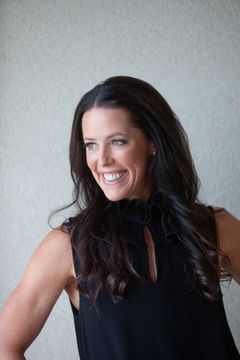This past year was clearly not typical, with a seemingly endless wave of events that upended our daily lives. For group fitness instructors, this meant our usual methods of getting people moving vanished in the blink of an eye. While clubs worked to figure out a path forward, our part in the pivot was not always apparent, clearly communicated or even considered. In some ways, it feels like a lifetime has passed since the original closures. And yet in others, it feels like only a fraction of a second. Regardless of what is happening in your area, one thing is for sure—January will not be the same, and we need to prepare ourselves for what comes next. Here are some essential steps to help you get started.
Acknowledge and accept that January will be different
“Conflict is when expectation doesn’t meet reality.” I don’t think you can find a better quote to guide us as we close the book on 2020.
Take some time to imagine what this unique New Year will bring instead of expecting the January of old. While I’m not suggesting you prepare for a worst-case scenario, you should spend time brainstorming all the ways it might be different. Consider what’s happening near and far regarding the pandemic, the economy, the political climate and everything in between. Then, ideate how you can embrace the differences and adapt your programming, teaching and approach. Socialize your thoughts and plans with fellow instructors, your manager and various group fitness networks to gain different perspectives.
Questions to consider: What’s happening with school schedules? How is the confidence level of current members and others in your community? Is your club expecting a New Year's rush? Will the schedule be changing?
Adopt a positive mindset
Once you've considered all angles for what January might bring, it’s time to shift your mindset. Instead of looking for what’s missing, start a list of what might be good about how different this New Year might look and then make a plan to capitalize on the differences.
Here’s an example:
One change we are all anticipating is smaller-than-average class sizes, which makes it essential to create a plan for helping participants who do show up feel amazing! Consider how you can learn more names and use them throughout the class. Focus on the benefit of keeping an eye on more participants and figuring out how you can provide impactful corrections without singling anyone out.
Questions to consider: Is there a new format you've been wanting to teach (now might be a good time with smaller audiences)? Can you “experiment” with some of the techniques and ideas you learned during your downtime (with less risk!)? Will a lighter class load give you more time to get yourself moving, and how might that help reduce your fatigue or burn out?
Alter how you measure success.
As mentioned earlier, you’ll most likely be teaching smaller classes in the New Year. No doubt, this might do a number on your psyche. The number of bodies packed into a studio is what has defined our worth for far too long. I’ve often advocated that this should not serve as our key performance indicator, but now more than ever we need to make a list of all the things we have control over and allow those to be the markers we observe. Consider tracking the number of unique participants in your class, referrals, penetration (percentage of members in your class compared to the club simultaneously) and positive feedback received.
Keep in mind, being the most challenging instructor might not necessarily make you the most popular next year. While some members might come to you expecting a beat down, many will be looking for something very different. Your success will hinge on coaching experiences that allow everyone to find what they need in the moment, without judgment. Adopt an attitude of curiosity and empower participants to do what works for them if they’ve found their way to your class.
The pandemic has taught us that great workouts can be found almost anywhere—in the gym, outside, at home on an app. What it takes to get to class these days is so much more than it used to be. Celebrating a participant making it into the studio and viewing their presence as a gift will be a gamechanger. Learn more about why your participants are showing up. Community, connection, accountability, and fun - this is what they're after. Do more of this!
Things to consider: Make a list of new ways to measure your worth. Revisit your cueing and be sure you’re coaching to all needs versus the ones that might have made you popular in the past. And honor each and every person who shows up, whether they give it their all or stand in the back and just breathe. Finally, know that you are vitally important to the health and well-being of every single person who walks into your class.




 by
by 




 by
by